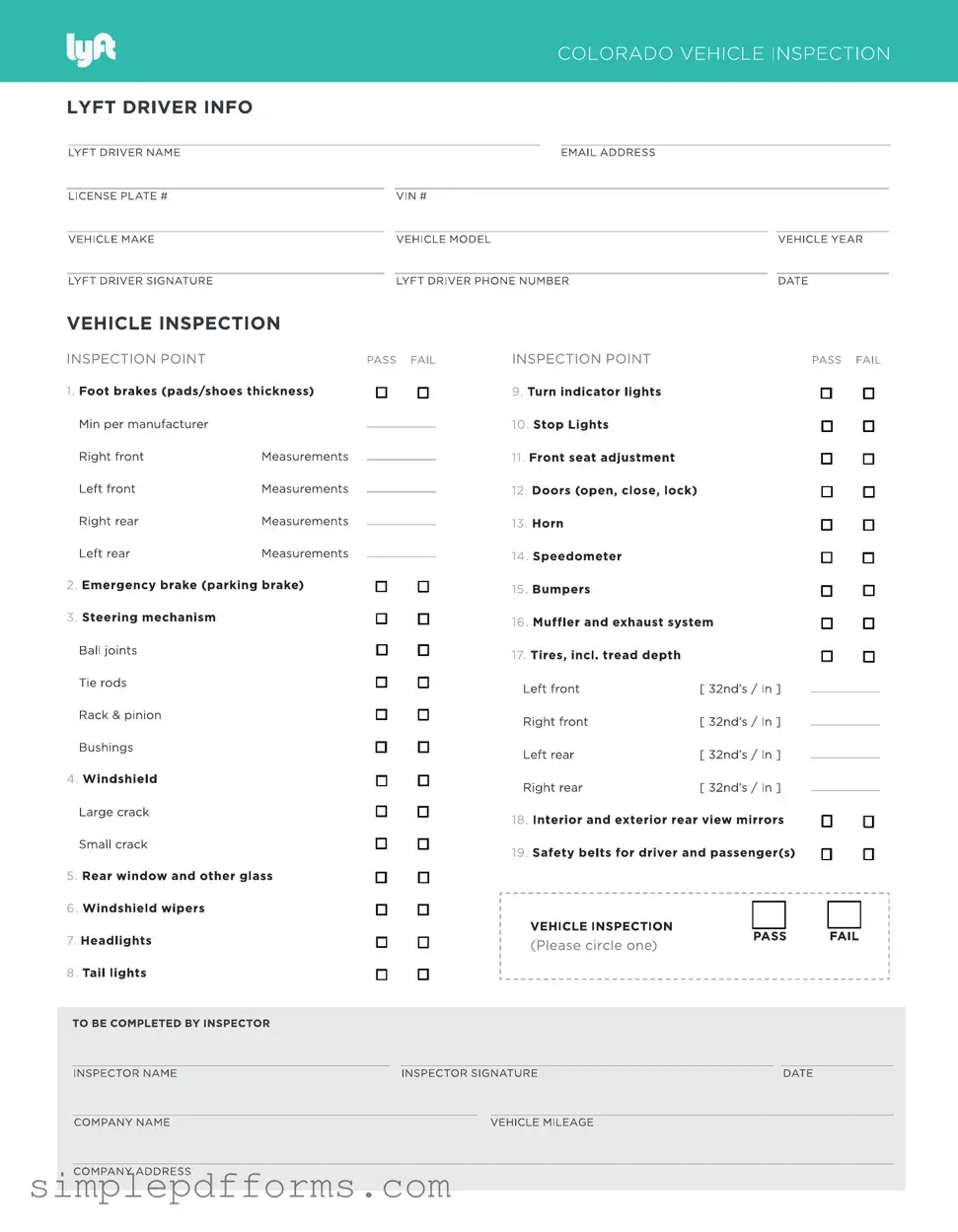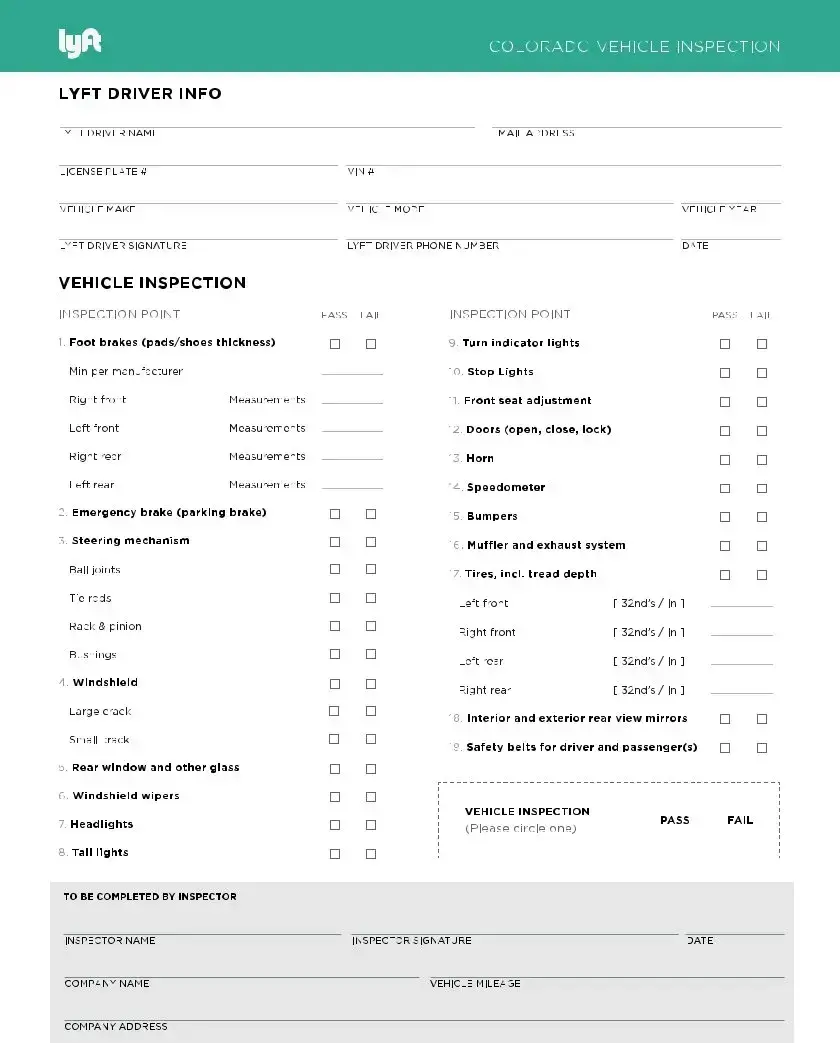Steps to Writing Lyft Inspection
Filling out the Lyft Inspection form is a straightforward process. You will provide essential information about your vehicle and confirm that it meets Lyft's safety standards. Follow these steps carefully to ensure accurate completion.
- Begin with your personal information. Enter your full name, email address, and phone number.
- Provide your vehicle details. Include the make, model, year, and color of your car.
- Input your vehicle identification number (VIN). This is typically found on the dashboard or inside the driver's side door.
- List your license plate number. Ensure it matches the plate currently on your vehicle.
- Check the box to confirm that your vehicle is registered and insured.
- Indicate the mileage on your vehicle. This should reflect the current odometer reading.
- Answer any questions regarding the condition of your vehicle. Be honest and thorough.
- Sign and date the form. Your signature confirms that all information is accurate.
After completing the form, review all entries for accuracy. Make sure all required fields are filled out correctly. Once satisfied, submit the form as directed to proceed with the inspection process.

